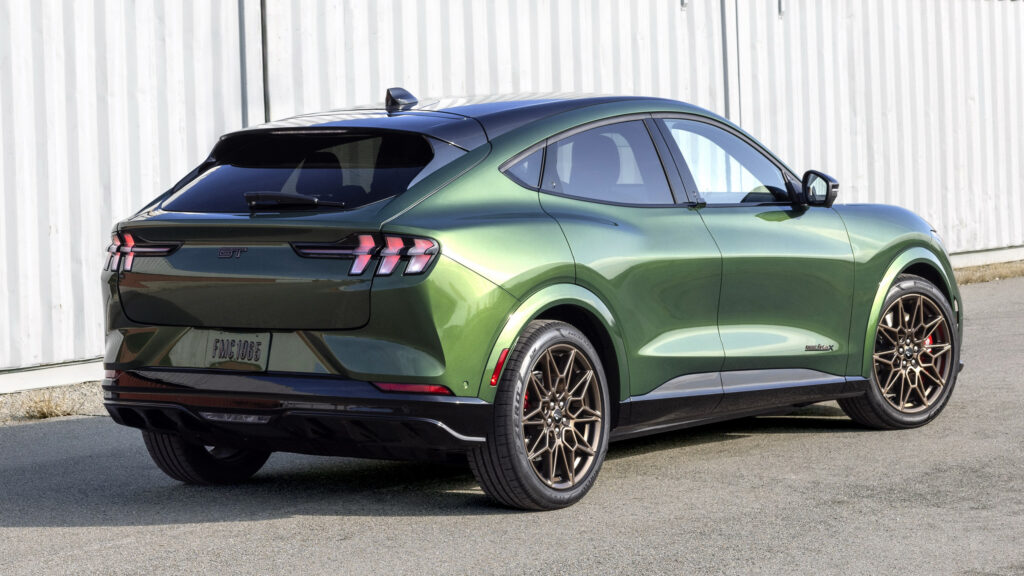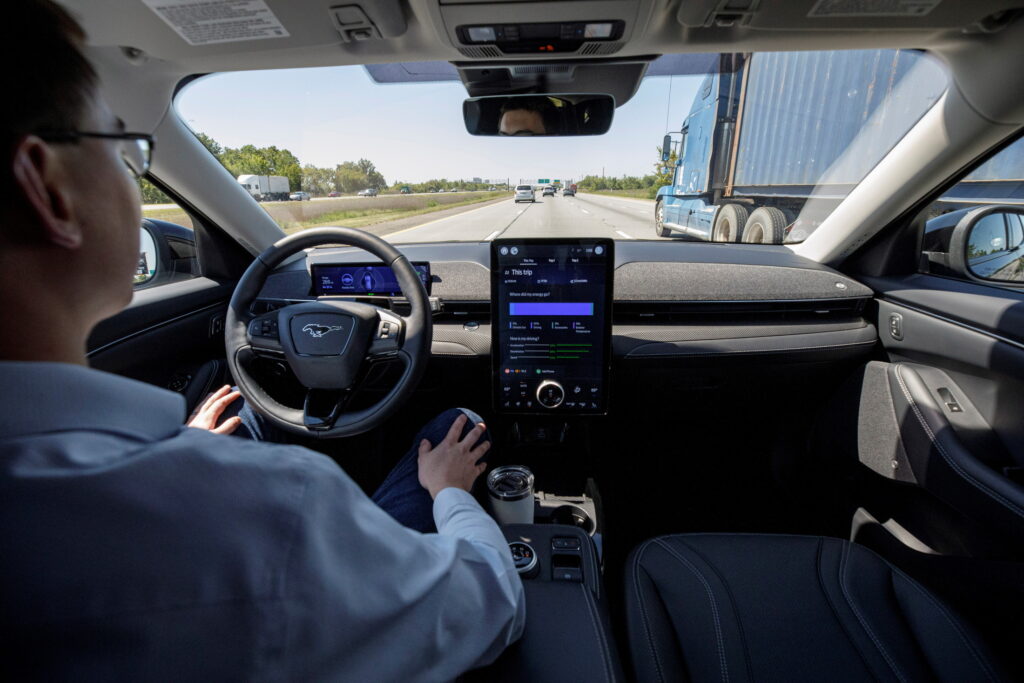
A fatal accident that occurred in February has caught the attention of America’s civil transportation accident investigation team, the National Transportation Safety Board (NTSB). Of particular interest to the federal agency is the potential involvement of Ford’s advanced driver assistance system (ADAS), BlueCruise.
The crash that the NTSB is looking into occurred on February 24 on Interstate 10, in San Antonio, Texas. The organization says that the crash involved a collision between a Ford Mustang Mach-E and a Honda CR-V.
In the immediate aftermath of the accident, the Ford driver told police that the Honda was stopped in the middle lane of the freeway with no lights on, per KSAT. The Mustang Mach-E, whose occupant suffered no serious injuries, struck the CR-V, killing its 56-year-old driver.
Read: Study Shows Two-Thirds Of U.S. Drivers Are Scared Of Self-Driving Cars
var adpushup = window.adpushup = window.adpushup || {que:[]};
adpushup.que.push(function() {
if (adpushup.config.platform !== “DESKTOP”){
adpushup.triggerAd(“4d84e4c9-9937-4f84-82c0-c94544ee6f2a”);
}
else{
adpushup.triggerAd(“6a782b01-facb-45f3-a88f-ddf1b1f97657”);
} });

“NTSB is investigating this fatal crash due to its continued interest in advanced driver assistance systems and how vehicle operators interact with these technologies,” an NTSB spokesperson told KSAT. “A team of investigators from the NTSB’s Special Investigations Branch of the Office of Highway Safety will travel to San Antonio to examine the wreckage and collect information about the accident site and sequence of events leading to the collision.”
In a statement, Ford said that it extends its “deepest sympathies to those involved” in the crash, and that it will “collaborate fully” with the investigation. It added that it reported the incident to the National Highway Traffic Safety Administration (NHTSA) as soon as it became aware of it.
Ford’s ADAS program is called BlueCruise and allows drivers to take their hands off the wheel under certain circumstances. However, the Level 2 autonomous system requires that drivers keep their eyes on the road at all times.
window._taboola = window._taboola || [];
_taboola.push({
mode: ‘thumbnails-a-mid’,
container: ‘taboola-mid-article’,
placement: ‘Mid Article’,
target_type: ‘mix’
});
window._taboola = window._taboola || [];
_taboola.push({
mode: ‘thumbnails-oc-2×1’,
container: ‘taboola-mid-article-thumbnails-organic’,
placement: ‘Mid Article Thumbnails Organic’,
target_type: ‘mix’
});
It was one of 11 similar ADAS features that were recently rated as “poor” by the Insurance Institute for Highway Safety (IIHS), an independent safety rating organization. It claimed that there is little evidence to show that these systems actually make driving safer.
Both the NTSB and NHTSA have conducted investigation into crashes involving level 2 autonomous systems, most notably Tesla’s “Autopilot” feature.
var adpushup = window.adpushup = window.adpushup || {que:[]};
adpushup.que.push(function() {
if (adpushup.config.platform !== “DESKTOP”){
adpushup.triggerAd(“5646c171-cb6e-4e2c-8440-49013ca72758”);
}
else{
adpushup.triggerAd(“e7c4c913-3924-4b2d-9279-6c00984dd130”);
} });

